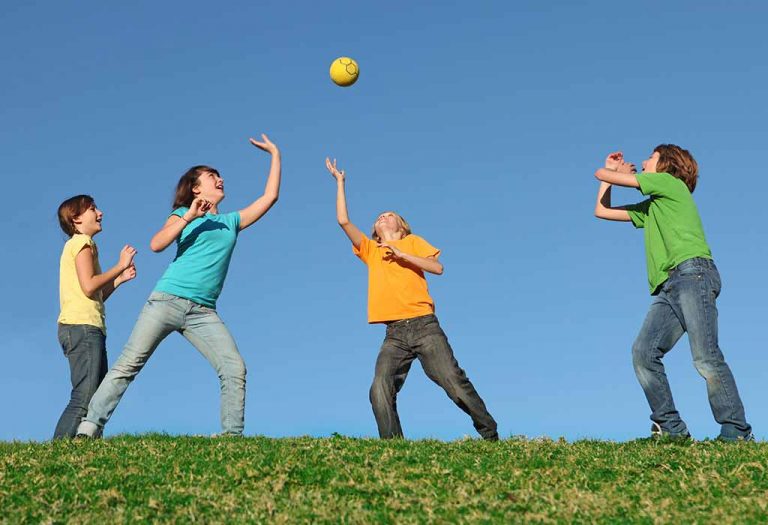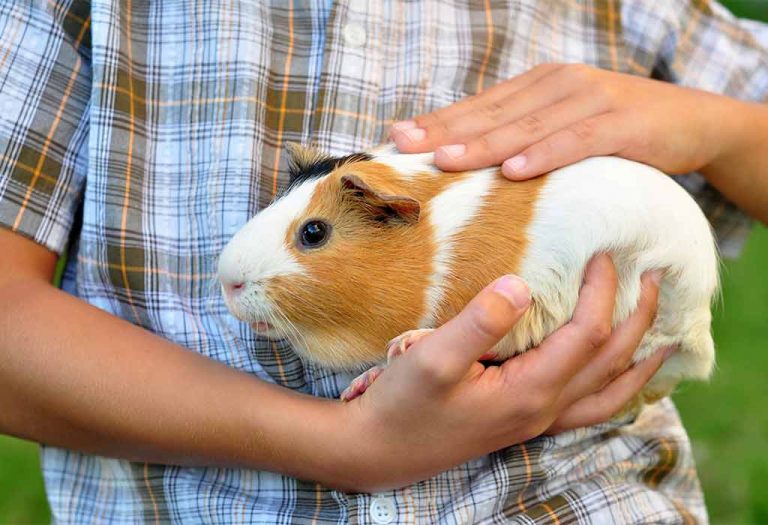Exciting Throwing Games for Kids
Throwing games are a great way for kids to have fun while getting some exercise! Kids can begin to play tag, rugby, soccer, bounce ball, dodge ball, cricket, football throw games, etc. These games not only promote physical fitness but also encourage teamwork, hand-eye coordination, and strategic thinking. They encourage kids to stay active and social while enjoying friendly competition. Kids will have a lot of fun playing, trying the techniques, and learning by observing other kids play. Here, we’ll share some exciting throwing games for kids that they will love, making them perfect for birthday parties or just a day of play!
What Are Throwing Games?
Kids generally love to throw, whether it’s a ball, paper, stick anything that comes to their hand. Throw and catch games are a type of game or sport that involves physical strength. These are physical competitions where the outcome is measured by the player’s ability to throw an object. Throwing games are thus good for exercise and developing sporting skills in kids. Kids are not just born good at; however, practice will make them perfect.
Advantages of Throwing Games
Below are the advantages that kids obtain by playing throwing games regularly (1):
- Helps to Improve Eye and Hand Coordination: Hand and eye coordination are crucial for a child’s developmental growth. It helps the kid to control and direct the limbs. They can interact with the physical objects in the world more easily.
- Improve Fine and Gross Motor Skills: The coordinated movement of small muscles like eyes, hands, and finger is part of fine motor skills. Kids get the necessary skills to perform tasks like picking and arranging different small objects. On the other hand, movement of the entire body and larger core muscles is known as gross motor skills. Kids learn to perform essential daily tasks like standing, jumping, running, and walking.
- Get Introduced to PE Activities and Sports: Physical training activities include children playing throwing games, thus giving them a fair idea of sport and what PE activities are. Kids quickly learn to memorise the game’s rules, indulge in fair play, and become a good sport.
- Understand Timing, Prediction, and Precision: Throwing games will help them gain the right skills. They will learn about different types of balls, their physical characteristics, how they roll and bounce, etc.
How to Teach Throwing Games to Kids?
Different techniques are required for different types of throwing games. However, while teaching throwing games to your kid, ensure their feet are shoulder-width apart. They need to determine the dominant hand to be used for throwing. Now lift the non-throwing arm, point it straight at the target and shift the weight to the back foot. Next, the kid needs to lift the throwing hand so that the ball is near the ear. The kid is now ready to throw. In just one motion, they need to shift the weight to the front, drop the pointing arm and then twist the torso, as the throwing arm is brought over the shoulder to release the ball towards the target. The throwing technique will require regular practice to improve with time. Do note the throw can be gentle or hard, and it could be overhand, underhand, or even sidearm. The overhand throw is the most common and the basic form of the throw.
Best Throwing Games for Children
Throwing games are a fantastic option for keeping kids active and entertained. Here are some of the best throwing games for children:
1. Getting to Know You
The Technique
- Play this game in a group. The players must not know each other or know more about others.
- Kids can play this game as young as age four.
- Make the kids and adults stand in a circle and have a ball along to play with
- An adult in the group begins the game by throwing the ball at someone standing in the group.
- While throwing the ball, you need to ask questions: What is your name? What is your favourite colour? Do you have a sibling?
- The kid who catches the ball needs to answer the question
- The kid will then again need to throw the ball and ask a question of his own
- The game works best when played quickly
- The adults in the team will have to take a foot forward to prod the young kids.
2. Dodgeball for Kids
The Technique
- This dodgeball game is a beginner’s version and is played by young kids who have just begun to learn throwing.
- A wall or a fence as wide as three to four meters is required to play this game.
- A large or a small soft foam ball is required to play this game. Ensure this to avoid the risk of getting hurt
- One kid needs to stand in front of the fence; however, they need to face away from the fence.
- The other kid must stand at least four meters away from the fence and be handed the ball.
- The kid with the ball needs to throw it to hit the child’s legs in front of the fence.
- The kid standing in front of the fence needs to dodge the throw. If he succeeds, he gets the point; if he fails, the other player gets the point and needs to swap the position.
- The kid standing in front of the fence can attempt to catch the ball and win a point.
- The player who scores 15 points first wins.
3. Egg Throwing Game
The Technique
- The egg-throwing game is an easy-to-play game. There must be an even number of players who need to be divided into pairs.
- Each pair of players needs to be given one egg each to begin the game
- All the teams need to stand at an equal distance from each other. One person from a team begins the game by throwing the egg to the other teammate
- If the teammate catches the tossed egg successfully, the pair takes a step back, and the game continues
- However, the teammate happens to drop the egg, but it doesn’t break; the teammate can pick it up and throw it back. They continue to be in the game
- However, if the egg happens to break on someone’s hand or the ground, that team is then out of the game
- The game continues in the same pattern until only one team is left behind standing.
- In the event, there are two teams as to which team’s egg broke. First, the winning team will be determined by whichever team is at the farthest distance apart.
- Egg throwing game is one of the indoor throwing games; hence you can choose to replace a raw egg with hard-boiled eggs to avoid unnecessary mess.
4. Ring Throwing Game
The Technique
- Use 10 -12 bottles on a flat surface or a table to set up the game.
- If you don’t have rings at home, they can be purchased online or from a local store.
- The distance from the throwing point to the target place where the bottles are kept need to be about 0.91 meters or 3 feet in distance.
- Ask the instructor about the rules of the game. Generally, the Ring throwing game has the same universal rule.
- There could be rules about fault lines the number of turns one is allowed per ring to bring in variation.
- All the rules need to be followed to win the game.
- The player needs to hold the ring in the dominant hand and place the ring in the crease between the forefinger and the thumb.
- Hold the ring in the same manner as you would hold a Frisbee. Do note that the ring is just about large enough to land on the target (bottle) in this case, only when it is flat.
- Do not try different angles, as it may result in the ring bouncing away or just hitting the bottle
- The next step is to snap the wrist, throw the ring towards the bottle, and let it go.
- Ensure the wrist and the arm needs to be as straight as possible. The ring needs to be thrown as low as possible.
- Always aim for the first or the second row of the bottles. As a result, it will decrease the chances of any accidental hit on the bottle.
- One can do well with more practice to refine the throwing technique to win the game.
5. Spot On
The Technique
- This game is ideal for kids who have good knowledge about the overarm throwing technique.
- Two teams need to be set up that will compete with each other. The team size can be as small as two-player per team.
- A ball thrower needs to be nominated from each team
- The other players of the team need to walk towards the playing court and need to stand on pre-arranged designated play spots (use plastic markers or poly spots)
- Two nominated throwers need to stand on the designated baseline of the court. The throwers then need to throw the ball to the players who are part of their team.
- Once a player catches a ball, he will need to take his poly spot and leave the court. The team gets to earn one point for every player poly spot.
- The team that can clear the court if their poly spots stand to be the winner
- If there are more ploy spots than the number of players, assign different colours to each team. Hence, after a player catches a ball, he will need another spot of the same colour.
6. SPUD
The Technique
- Every player needs to share their name aloud. One of the players needs to be chosen and named “It.”
- “It” is the first to get the ball, and all the other players need to stand, forming a circle around “It.”
- “It” then has to throw the ball up in the air and call out anyone player’s name standing in the circle.
- The moment “It” throws the ball up in the air, all other players need to run as quickly as they can.
- The player’s name called out by “It” needs to run back and grab the ball and scream STOP as soon as he gets the ball.
- All other players need to stop at once.
- Once STOP has been called, the “New It” (this is the other player whose name was called out by the old “it” and is now holding the ball) has to take 4 steps and yell S, P, U, D as they do so to reach to one of the closest players.
- The “New It” is not allowed to jump; however, he can take as many steps as they can – but not more than 4 steps are allowed.
- The “New It” has to pick out a “Target” person from the rest of the players and then throw the ball to get that person out.
- “New It” needs to hit the “Target” he has chosen but cannot use headshots.
- In case the “New It” cannot hit the identified “Target” and misses it or if the “Target” happens to catch the ball, then the “New It” is then out of the game, and the “Target” becomes the new “It.”
- Now the “New It” needs to hit its target successfully, then the “Target” is then out, and “New It” continues to remain the “It.”
- The same rules from the second step continue where everyone again gets back to form a circle and keep playing the game until just one person is remaining.
- The last remaining person is the winner of the game.
7. Bean Bag Toss
The Technique
- In this fun and easy game, players take turns throwing bean bags at a target board to score points.
- To set up, you need a target board with holes cut out for scoring, placed at a comfortable distance for the kids.
- Each player throws their bean bags at the target, earning points for landing them in the holes.
- The game continues until all bean bags are thrown, and the player with the highest score wins.
8. Knock Down Cans
The Technique
- Stack several empty cans in a pyramid shape on a table, shelf, or flat surface.
- Each child is given a soft ball, like a foam or tennis ball, to throw at the cans.
- The objective is to knock down as many cans as possible with each throw.
- Children take turns throwing the ball, and you can either count how many cans they knock down or play multiple rounds.
- The child who knocks down the most cans during their turn or after several rounds is declared the winner.
9. Balloon Dart Toss
The Technique
- Attach balloons to a board or wall and give each balloon a point value depending on its placement.
- Children are given a certain number of darts or soft balls to throw at the balloons.
- Each balloon popped or hit earns the points associated with it.
- The child who scores the most points by popping balloons wins the game.
10. Basketball Free Throw
The Technique
- Set up a basketball hoop or any raised target (such as a laundry basket) at a reasonable height for the children’s age group.
- Have the children stand at a specific distance and take turns trying to throw the basketball (or any soft ball) into the hoop.
- Each child gets a set number of shots, and points are awarded for each successful shot.
- The child with the most successful free throws at the end of the game wins.
FAQs
1. How can I ensure safety during throwing games?
Choose soft, age-appropriate game materials like foam balls, bean bags, or plastic rings. Make sure the playing area is free of obstacles, and supervise kids closely, especially when playing with objects like darts or water balloons (2) (3).
2. Can throwing games be played indoors as well as outdoors?
Yes, many throwing games can be adapted for indoor play. For example, Bean Bag Toss, Ring Toss, and Skee-Ball with bean bags are perfect for indoor settings. Just ensure there is enough space and you use soft materials to avoid damage or injuries. Outdoor games like Water Balloon Toss or Frisbee Golf are best played outside for more space and minimal mess.
If your kid can throw quite well, then they can participate in different throwing games like baseball, bocce, football, frisbee, or javelin. If the kids are grown up, then with the supervision of the adults, they can try to play sandbag throwing games or even the outdoor ax-throwing game. Overhand and underhand throw games need a lot of practice. Kids can master the art by repeatedly playing the games. These games give the kids enough time to spend quality time outdoors with their parents and other friends.
References/Resources:
1. Why Everyone Should Learn How to Throw and Catch; Bluearth Foundation; https://www.bluearth.org/why-everyone-should-learn-how-to-throw-and-catch/
2. 8 Outdoor Play Safety Tips for Kids; Pathways; https://pathways.org/outdoor-play-safety-tips/
3. Playing Outside in the Yard: 8 Tips to Keep it Fun & Safe for Kids; American Academy of Pediatrics; https://www.healthychildren.org/English/safety-prevention/at-home/Pages/Backyard-Safety.aspx
Also Read:
Best Indoor Games for Kids
Hand Games for Children
Fun Balloon Games for Children
Animal Games and Activities for Kids
Was This Article Helpful?
Parenting is a huge responsibility, for you as a caregiver, but also for us as a parenting content platform. We understand that and take our responsibility of creating credible content seriously. FirstCry Parenting articles are written and published only after extensive research using factually sound references to deliver quality content that is accurate, validated by experts, and completely reliable. To understand how we go about creating content that is credible, read our editorial policy here.























